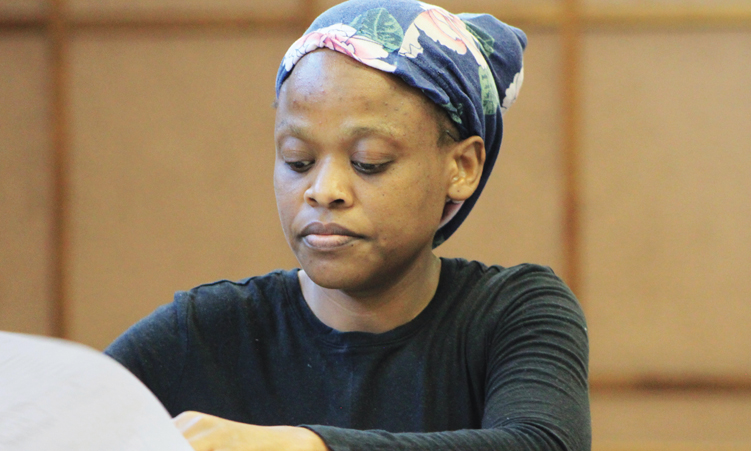While the heavy rains have been a blessing in many ways, they have also thrown a spanner in the works by exposing vulnerabilities that can no longer be ignored.
The torrents that have graced our lands this rainy season have nourished our fields but have also unleashed devastating floods.
Many roads were submerged and a key bridge connecting Windhoek to Rehoboth was so damaged that communities were cut off for several hours.
Tragically, there have also been instances of a few casualties because of floods.
These events remind us that even our much-desired and long-awaited rains can become a threat if our infrastructure isn’t able to handle them.
A DOUBLE-EDGED SWORD
Heavy rainfall is a critical component in Namibia’s fight against drought.
A generous rainy season is a reason for celebration in an environment where water is as precious as gold.
However, when the rainfall becomes overwhelming as it often has this season, our drainage systems and flood control measures are harshly tested.
Empirical data indicates that rainfall totals reached unprecedented levels in some parts of Windhoek.
Although this is beneficial for recharging aquifers and filling dams, the same downpours have led to flash floods in urban areas with critical infrastructure significantly affected.
For instance, the inundation of the bridge on the Windhoek-Rehoboth corridor which left commuters and residents stranded.
WHAT WENT WRONG?
At first glance, it might seem that nature’s fury is the sole culprit, yet a closer look reveals cracks in our urban planning and infrastructure management.
Many of Namibia’s drainage systems are ageing and maintenance has not kept pace with the growing demands of urban expansion.
In several towns and cities, particularly those built on formerly arid lands, the infrastructure was originally designed for average rainfall which is now buckling under the weight of record-breaking volumes, leaving us scrambling to keep our heads above water.
Our drainage systems are critical to channelling away excess water quickly and safely.
When these systems fail, water accumulates and leads to street flooding, road closures and, in extreme cases, loss of life and property.
This season’s challenges have exposed significant gaps in our infrastructure’s capacity to handle heavy rainfall events.
CHARTING A WAY FORWARD
To steer clear of future rain-induced disasters, Namibia must roll up its sleeves and take a multi-pronged approach that combines immediate action with long-term strategies. Among others, this entails:
- Regular and improved maintenance and upgrading of drainage networks.
- This includes clearing debris from drains, repairing worn-out pipes and replacing outdated systems with modern and more efficient technology.
- In high-risk urban areas, authorities should invest in expanding drainage capacity.
This means designing new systems to handle larger volumes of water and incorporating smart sensors that can monitor water levels in real time, alerting local authorities before a system is overwhelmed. - Urban planners must re-evaluate land-use policies to restrict development in flood-prone areas.
Building codes should incorporate flood risk assessments and future construction should consider elevation and natural water flow patterns. - Embracing green infrastructure can significantly reduce flood risks.
- For example, creating rain gardens and permeable pavements can help absorb rainwater rather than allowing it to run off into the streets.
These nature-based solutions not only reduce flooding but also improve urban air quality and provide recreational green spaces. - There must be a renewed investment in resilient infrastructure.
- Government investments in projects such as the new modular desalination plant in Erongo and the Baynes Hydropower Project highlight a broader commitment to strengthening Namibia’s infrastructure.
- Similar investments should be made in upgrading drainage and flood control systems.
- To maintain these systems, sustainable funding must be secured.
- This might include public-private partnerships that share the financial burden while ensuring accountability and transparency in infrastructure development.
- Community-based disaster response must be strengthened.
Communities should be encouraged to have their own disaster response plans. - In partnership with community organisations, local governments can develop contingency plans tailored to the specific risks of their areas.
- Providing communities with training in first aid, evacuation procedures and emergency responses can reduce casualties when floods occur.
Local emergency response teams should be equipped with resources to effectively deal with sudden flooding incidents.
TURNING THE TIDE
Other regions have successfully turned the tide against heavy rains by investing in resilient and adaptable infrastructure.
The Netherlands, for instance, has long kept floodwaters at bay with state-of-the-art drainage systems and flood barriers.
Here at home, initiatives like the Harambee Prosperity Plan II and NamWater’s modernisation of water supply infrastructure efforts signal that we are on the right track towards a more resilient future.
The heavy rains of 2025 have thrown both a blessing and a curveball our way.
While they provide much-needed relief, they also expose the frailties and fragility of some of our current infrastructure.
The damaging effects of future heavy rain can be mitigated by upgrading drainage systems, improving urban planning and investing in early warning systems while strengthening community preparedness.
It is time for all stakeholders (government, the private sector and local communities) to work together to ensure that our vulnerability is turned into a bulwark of strength.
- Oluibukun Ajayi is an associate professor of geoinformation technology at the Department of Land and Spatial Sciences, Namibia University of Science and Technology (NUST). He writes from Windhoek and can be reached via oajayi@nust.na. The views expressed here are his own and not those of Nust.
Stay informed with The Namibian – your source for credible journalism. Get in-depth reporting and opinions for
only N$85 a month. Invest in journalism, invest in democracy –
Subscribe Now!










